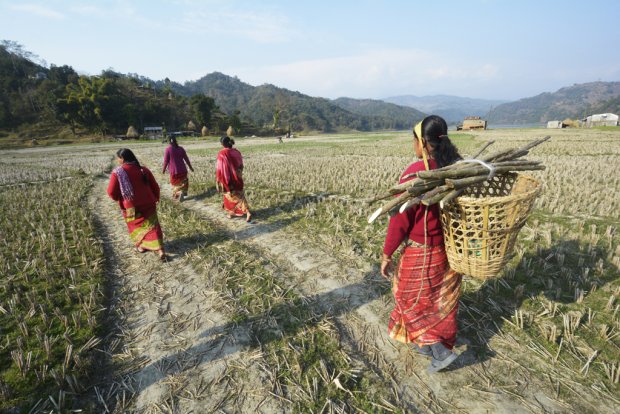Digital Dividends in Agriculture
- Nature Khabar

Agriculture is location-specific, and farmers need accurate local weather forecasts, advice on agricultural practices and input use, and real-time information about prices and market logistics. Harnessing the rapid growth of the internet and associated digital technologies such as mobile phones is critical to helping farmers obtain the information they need and to promoting transformative agricultural development. Interest is especially keen in increasing access to extension services, improving marketing of outputs, and arranging logistics. The body of rigorous, quantitative evidence on the ways in which digital innovations can help improve the lives of rural people is growing steadily. Enhancing on-farm productivity Agricultural productivity varies dramatically around the world. While credit constraints, missing insurance markets, and poor infrastructure account for some of this disparity, suboptimal agricultural practices and poor management are also to blame. New production technologies such as improved seed varieties, nutrient management, and pest control methods are not necessarily reaching farmers. Public extension agents can overcome information barriers related to new agricultural practices and technologies, but such extension programs have been burdened by limited scale, sustainability, and impact.
Digital technologies help overcome these constraints. They are reviving agricultural extension and advisory services around the world. In cooperation with agricultural research and extension services, organizations such as Digital Green, the Grameen Foundation, and Techno Serve deliver timely, relevant, and actionable information and advice to farmers in South Asia, Latin America, and Sub-Saharan Africa, respectively, at a dramatically lower cost than traditional services can. Rather than always visiting a farmer, extension agents use a combination of phone calls, text, videos, and internet to reduce transaction costs and increase the frequency of interaction with farmers.
With globalized food systems, ensuring food safety has become more complex. These trends have catalyzed innovations to trace the food supply from producer to consumer—which is important for developing countries that want to reach new export markets. Smallholder farms can turn to cooperatives and aggregators, who use digital tools to improve collection, transportation, and quality control. By opening up new specialized market opportunities, the internet has improved consumer protection and farmers’ livelihoods. Lessons for adapting digital technologies for agriculture Why do many of these innovations fail to scale up and achieve wider acceptance? One reason is market fragmentation—even though market consolidation will, over time, enhance growth prospects. Another reason is the lack of financially sustainable business models that will attract private sector investments in innovative solutions for small-scale agriculture. There is great potential for the internet and related technologies to improve rural economies, but several lessons need to be kept in mind.
First, agriculture is becoming increasingly knowledge-intensive and high-tech. Some of the world’s newest industries have started to put money and tech talent into farming—the world’s oldest industry. Digital soil maps, remote sensing, and global positioning system (GPS) guidance are critical tools for modern farmers. “Big data” for precision agriculture increases yields and efficiency. These high-tech tools mostly benefit big farms that can make large investments in technology. But there are also many innovative ways in which illiterate and otherwise disadvantaged people use digital technologies, such as basic mobile phones. Greater efforts to close the digital divide in rural areas can have great payoffs. Second, basic price and market information systems can improve efficiency and welfare. The evidence, although strong, is still limited to certain countries and certain contexts. A number of recent studies have cast doubt on the overall novelty of information provided to the farmer and the degree of competition in many markets. One explanation of weak effects is low take-up of fee-based price information services.
But even when farmers are seemingly better informed, they may not necessarily be able to act on that information because of the inaccessibility of alternative markets and the complex interlinked relationships between buyers and sellers in low-income developing economies. The versatility and near-constant innovation that characterize digital technologies can sometimes be a distraction that can cause interventions to focus more on the technology than on the demands and priorities of the intended beneficiaries and the trade-offs imposed by resource constrained environments. Finally, information technology (IT) policy and the broader regulatory environment in a country should be discussed jointly. Whereas the expansion of mobile phone access has been rapid and commercially self sustaining even among many of the poor, the same is not true of the internet. In the long run, the internet can have an even greater impact on rural growth; much depends on finding sustainable business models to encourage its spread in the poorest parts of the world.




Feedback